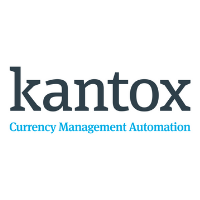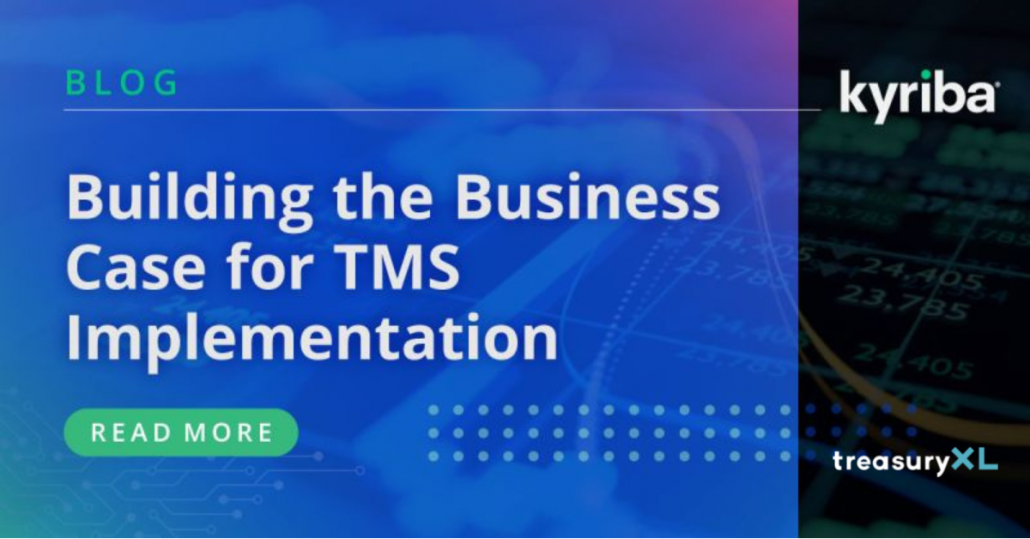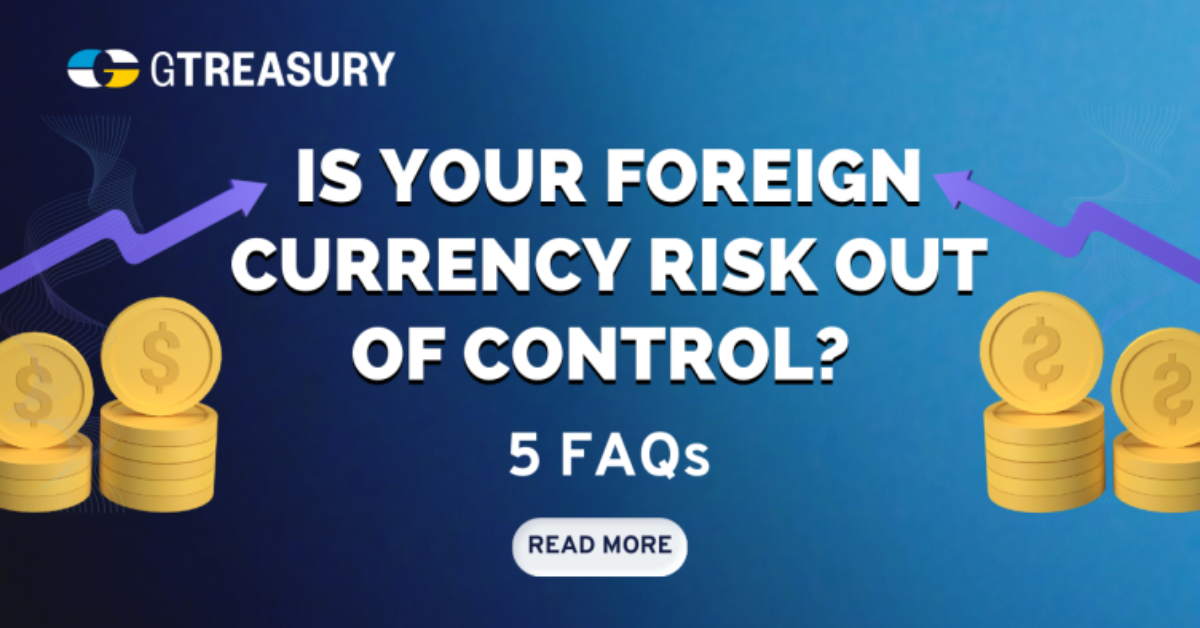LIVE DISCUSSION | How FinTech is Revolutionizing Corporate Treasury
02-03-2023 | treasuryXL | LinkedIn | What new and exciting innovations are happening in the corporate treasury marketplace and how are FinTech’s playing a role in this space?
02-03-2023 | treasuryXL | LinkedIn | What new and exciting innovations are happening in the corporate treasury marketplace and how are FinTech’s playing a role in this space?
02-03-2023 | Nomentia | treasuryXL | LinkedIn | Inflexion is pleased to announce it has entered into an agreement to acquire a majority stake in Nomentia, a leading European treasury and cash management software provider, from current investors PSG Equity (“PSG”), a leading growth equity firm partnering with software and technology-enabled services companies, and Verdane, a European specialist growth investor named one of the region’s most active software investors. The investment is being made by Inflexion Buyout Fund VI.
01-03-2023 | Sugandha Singhal | treasuryXL | LinkedIn | As treasurers, working capital management is a key part of our responsibilities. It is a metric of how efficiently a company is operating and how financially stable it is in the short term.
28-02-2023 | treasuryXL | Kantox | LinkedIn |
This episode of CurrencyCast dives into the impact of behavioural biases in currency management and how they impact financial decisions. You’ll learn about the most common biases that can affect decision-making, including conservatism, forward rate, overconfidence, and loss aversion biases. But fear not! The episode also provides solutions to mitigate these biases and optimise your currency management strategies.
Disclaimer: This information is being shared for informational purposes only and was originally published by Kantox (Source)
Discover how implementing automation solutions can help remove systematic errors and allow you to embrace foreign currencies, increasing profitability and fostering growth.
Don’t let inherent biases affect your work – watch the latest episode of CurrencyCast and take control of your currency risk management today!

27-02-2023 | treasuryXL | Kyriba | LinkedIn |
By Andrew Deichler, Content Manager, Strategic Marketing
Convincing the CFO to approve the adoption of a treasury management system (TMS) almost always requires the treasurer to carefully build a strong business case. During a panel session at a recent Kyriba event, treasurers from multiple companies shared their experiences pitching TMS implementations to their finance chiefs.

Building the business case for new treasury technology is a tall order, even if doing so can greatly improve cash and liquidity management, FX risk management, working capital management and more. In times of economic uncertainty and budget tightening, it’s even more challenging. But treasurers can have greater success if they know how to position a treasury solution as a necessity.
Lee-Ann Perkins, assistant treasurer for Specialized Bicycle Components, noted that throughout her career, she has been successful pitching a TMS implementation to a CFO at times when various external factors were in her favor. If the economy was good or the company was performing consistently well, then getting buy-in for treasury technology can be a much easier sell.
Fred Schacknies, treasurer for TechnipFMC, noted that treasurers generally “don’t do a great job” of talking TMS implementations to the CFO. Schacknies speaks from extensive experience, having pitched TMS implementations to four CFOs at four different companies. In his estimation, convincing the CFO generally boils down to showing them what finance and treasury currently cannot do without such a treasury system. “Either it’s helping a critical transformation or it’s not,” he said.
For example, treasury at TechnipFMC manages “a material foreign exchange portfolio,” which is challenging to do with legacy technology, Schacknies explained. While treasury also is well staffed in comparison to the size of the company, it could run more efficiently if certain tasks we automated. So, gaining buy-in from the CFO on a treasury system implementation wasn’t difficult because Schacknies was able to show that it supported key strategic and organizational imperatives.
According to Chris Mitchell, treasury director, technology and operations for Koch Industries, it can also help to provide the CFO with more of a long-term vision rather than just immediate process improvements. When the treasury leadership team presented the case for a TMS implementation to the CFO, they first discussed the benefits of automation. It didn’t move the needle. But when they presented their overall vision and strategy of a treasury department across the world working closer together, the CFO was able to see how a TMS could help. “We needed one single application that could be accessed across the entire globe by a core group of treasury individuals to support our businesses,” he said.
Treasury can also capitalize on timing. Petar Tomicic, treasury manager for Beam Suntory, explained that the 2014 acquisition of Beam Inc. by Suntory created a “perfect storm” for a TMS implementation. The treasury department knew that the legacy system it was using was outdated. After the acquisition, it became immediately clear that the system didn’t have the capacity to handle the growth that the company was expected to experience. So, for Beam Suntory’s treasury, building a business case with the CFO wasn’t difficult because it was absolutely necessary due to the changes the company was experiencing.
It also helps to have allies outside of treasury to support your case. A TMS implementation affects more than just treasury, and it can help immensely if other departments recognize this fact.
Stephen Kincaid, vice president and assistant treasurer for Walker & Dunlop, explained that in 2016, his controller was the one who first suggested investing in a TMS. This occurred right before AFP’s annual conference, which provided the perfect opportunity to meet with various TMS providers.
After speaking with several TMS providers at the conference and ultimately selecting Kyriba, Kincaid and his controller needed approval from the CFO. Fortunately, the CFO agreed because they were able to carefully illustrate why Walker & Dunlop needed to adopt a treasury system. “We had over 1,000 bank accounts with multiple banks, and didn’t have an easy, efficient way to track our cash positioning in real-time,” he said. “Ultimately, my controller was easily able to convince the CFO of the many benefits that a TMS could provide to our organization.”
When Lee-Ann Perkins join Specialized in 2021, she faced a unique challenge. Treasury had already adopted Kyriba, but the project had stalled prior to completing the implementation across the company’s locations around the world. “So, my job was to restart a Kyriba implementation for the rest of the company—in 80 countries,” she said.
Finishing the implementation was critical for Perkins to achieve her overall goals of automating and maturing the treasury department. While Specialized is a large, global company, the treasury team is small. Maintaining continuity—which includes cash visibility and protecting the company’s financial assets—is much easier to do with a treasury solution. But completing the project would require more than just getting the treasury team on board, as well as producing hard numbers.
“The sell to the CFO was to get resources from the financial side and the human capital side to ensure we could keep the implementation going,” she said. “It wasn’t what I would call an easy sell. It required conversations, quantitative metrics and qualitative metrics, to ensure that there was buy-in from the end-users. Because at the end of the day, those people running the system need to also know that they can use it in their particular jobs as well.”
There are a multitude of factors that can contribute to treasury either getting the approval for treasury software implementation or getting shot down. With a possible recession looming and many companies tightening their purse strings, 2023 may be an exceptionally challenging year for treasury departments to get buy-in for a TMS. Treasury must establish the need for a system—not only for itself but across other departments.
Often tasked with doing more with less, treasury has consistently risen to the challenge. But there comes a point where investments need to be made for treasury and the overall business to continue to perform at a high level. If treasury can make that case, then getting buy-in might not be a tall order after all.
23-02-2023 | treasuryXL | LinkedIn |
Download the comprehensive eBook on Treasury function, compiled by treasuryXL. This valuable resource covers a wide range of relevant topics including Treasury, Corporate Finance, Cash Management, Risk Management, and Working Capital Management.
Drawing on the expertise of Treasury professionals and their best practices, we have carefully crafted clear and concise articles that provide you with the most crucial information about the key topics in the world of Treasury.
In this eBook, we take a deep dive into each Treasury function and explore:
Whether you are new to Treasury or an experienced practitioner looking to expand your knowledge, this eBook is an essential resource that will help you stay up-to-date with the latest best practices and insights in the field.
We simply giveaway two presents for you! By signing up for our newsletter you will automatically receive the following in your inbox:
Subscribe, Join, Download and Relax.
Welcome to our community and have fun reading!

Director, Community & Partners at treasuryXL
23-02-2023 | Aastha Tomar | treasuryXL | LinkedIn | After two years of hiatus, here I am again to write for the team I love the most and the team whom I owe the most in Netherlands. treasuryXL has a special place in my heart, I got linked with them as soon as I shifted to Netherlands in 2019 and since then they have been a constant source of support for me.
22-02-2023 | treasuryXL | LinkedIn | On January 24th, 2023 we hosted a joint webinar with our partner Kantox about the Currency Management Priorities for 2023. In this 45 minute session we take you through the key trends and opportunities in currency management.
20-02-2023 | treasuryXL | GTreasury | LinkedIn |
When left unaddressed, foreign currency risk can wreak havoc on your bottom line. But it doesn’t have to be this way. To keep foreign currency fluctuations under control and drive predictability in financial statements, many companies turn to FX hedge programs.
Source: GTreasury

Foreign currency gains and losses occur when a company transacts in a currency other than their home currency.
A foreign currency transaction results in either a payment or receipt of that currency and the amount of U.S. dollars it will take to pay the payment or collect from the receipt changes with exchange rates.
When companies have hundreds or thousands of these types of transactions, the gains and losses due to the exchange rates can add up quickly.
Even though a large gain on your bottom line seems appealing – especially compared to a large loss – it also indicates instability in your financial statements month-over-month and year-over-year. Not to mention, the nature of fluctuating exchange rates means times of gains are temporary and large losses are inevitable.
More often than not, companies value predictability and stability in operations. And that’s what an FX hedge program provides.
An FX hedge program protects the amount of home currency needed to make a foreign payment or receive from a foreign currency collection. In doing so, it eliminates a majority of the foreign currency gain and loss noise in financial statements you may have been experiencing. Large swings in either direction will no longer happen, which means you’re able to explain your true business results more effectively to your Board.
A hedge program doesn’t mean zero FX, but it does reduce a majority of the fluctuations. What’s left over can be explained by a handful of “buckets” – such as un-hedged currency impacts or under-hedging a currency amount.
Yes! Starting a hedge program can be done quickly. Many times, a foreign currency risk problem can be fixed in just a few weeks or months – especially when you work with a partner that puts programs together every day. Supported by automation, your FX hedge program can get up and running fast – and continue to run seamlessly from there.
Companies operating internationally are exposed to currency risk – a risk to earnings driven by changes in currency exchange rates. The ones that hedge their currency risk have certain advantages over non-hedgers. For example, instead of just experiencing the changing exchange rate impacts, these companies are afforded predictable results and time to react to changes.
If you’re curious about implementing a hedge program or just got tasked by your Board to fix a problem Hedge Trackers can help – and fast.
17-02-2023 | treasuryXL | Kantox | LinkedIn |
Get ready for 2023 with our deep dive into the treasury fundamentals that will take over the currency management scene. All you need to know, from trends to technology, in one article.
Disclaimer: This information is being shared for informational purposes only and was originally published by Kantox (Source)
CFOs and treasurers are getting ready to face the many challenges of 2023. Finding the right approach to currency management will help them protect their company’s margins and adapt to the new reality.
In this episode of CurrencyCast, we sat down with our special guest, François Masquelier, for a complete session on the treasury fundamentals for 2023.
In this article, we will take you through:
Let’s analyse what upcoming currency management trends are going to be the main focus for treasurers this year.
When we take a look at recent European Treasury surveys, the PwC global annual survey and the last OECD survey or surveys, there is a common theme regarding the main focus for treasurers this year.
FX risk management is a top priority for corporate treasurers from 2023 onwards, right behind cash flow forecasting and digital transformation. This means that FX risk remains highly ranked by treasurers, and there are several reasons for this.
Sometimes CFOs do not always understand all the possibilities in terms of what we call optimizing forward points, that is to say, interest rate differentials.
The forward points may be a concern when there is a significant differential of interest, especially with exotic currencies. So it could be expensive to hedge certain currency pairs, depending on which side you are in. Sometimes those forward points could be in your favour, and sometimes could not be in your favour.
Treasurers with a favourable interest rate differential can decide not to hedge at all and just monitor the exposure. This is feasible, but as it is a highly manual task, the monitoring process of the open exposure can become quite tedious and inefficient.
However, the good news is that there exist certain solutions that allow them to dynamically manage your FX exposure. This way, finance professionals can reduce or mitigate the impact of the swap points and, ultimately, reduce the impact on costs.
The dollar and the euro remain important currencies, but there is a number of currencies from smaller but well-managed economies gaining ground.
As corporate treasurers are taking advantage of the benefits of buying and selling in more currencies, there is a microeconomic and bottom-up phenomenon leading to that multi-currency world.
Using the more exotic or smaller currencies, if managed properly, can protect your company against risks. The best approach to currency management this year is to use the most profitable currencies all the time.
You can prepare for these trends if you have a strong currency management system that covers the entire FX workflow and allows you to have clear visibility over your exposure. Take a look at the two main areas that could be affecting your currency management strategy.
Sometimes the importance of having accurate cashflow forecasts is somewhat overstated when it comes to currency management.
Let’s take the example of a micro-hedging program for firm sales or purchase orders. The exposure to hedge is already a contractually binding item, not a forecast at all. So we don’t have really much of an issue.
On the other hand, if you take the case of a layering program or layered hedging program, the FX rate would be built in advance, so the forecasted exposure to hedges is also known well in advance.
And finally, thanks to conditional orders that protect a budget rate, the Treasury team can have time to update and finetune their cashflows.
At Kantox, we believe that currency management is more than just currency risk management, and that currency risk management, in turn, is more than just the instant execution of a hedge.
But that requires a holistic approach to currency management, to cover the entire FX workflow. This means doing away with a siloed approach that allows the company to grow beyond imagination.
In treasury and finance, there are many silos that impact the optimal management of the department. Having clear communication and flow of information with other departments is vital. It provides better visibility of the exposure and gives the CFOs the ability to react to the volatility in the market faster.
Something key in the challenging context we are facing that impacts the very thin operating margins, and a great way to generate added value to the treasury function.
One clear example of this is the companies with subsidiaries that operate in foreign currencies. By offering the subsidiaries to invoice or be invoiced in the local currencies, you are centralising the FX risk, generating value for them and improving risk management.
Another example of tearing down the silos in treasury management is the relationship between the commercial and finance teams. They don’t always see eye to eye, but providing commercial teams with the FX rate they need in real-time is a good way of eliminating that silo mentality.
As consultants from McKinsey said, the early adopters who drive cross-functional teamwork are going to reap the benefits and see a great increase in annual revenue growth.
Now that you know where to focus on improving your currency management, consider what tools could streamline this. But don’t forget to analyse if the current process is hurting you more before implementing new technology. Consider what areas of your FX workflow need revamping.
One of the main pain points for CFOs is not having access to real-time data and dashboards that reflect the current state of the company’s financials. This makes it more difficult for them to make the right decisions on time.
There are tools, like the TMS, that are used in the treasury function with the objective of getting summarized information and reports but they are not properly fit for decision making at the C-level.
They lack dashboards fed with real-time data that would make it easier or facilitate the communication between Treasury and the C-suite. TMS have a few other shortcomings when it comes to currency management.
“Often a CFO is a car driver who does not see his/her dashboard immediately but with delay” – François Masquelier
When pricing with an FX rate, using the forward rate instead of the spot rate can help companies in certain situations improve their competitive position without hurting their budgeted profit margins.
But most TMS lack a strong FX rate feeder, meaning the possibility of providing commercial teams with the appropriate rate -a spot, or the two-month or the six-month forward rate, the pricing markups for a client segment-
Another problem with TMS is that the functionalities in the report are standard and not really customer variables. They are more of like pret-a-porter solution.
When we talk about the reporting and development of specific functionality, treasurers must find a way to fulfil these gaps and find the missing pieces.
This means that in the pre-trade phase of the FX workflow, TMS is not covering the needs of treasurers and CFOs.
ChatGPT is all the rage right now, AI or artificial intelligence is making a comeback. But is it going to be the future in terms of treasury management and cashflow forecasting?
AI could play a role in the future of treasury management. However, we are still in the early days and there are many other ways CFOs and treasurers can start the digitization of the treasury function before resorting to AI.
There are some things that need to change in the way treasury is done and the approach of many finance professionals to the treasury tech stack. Those in charge of managing currencies need to be comfortable with their IT skills to make good use of new technology.
Another hurdle to the implementation of AI in treasury is the lack of access to comprehensive and immediate data. And finally, the inefficiency of highly manual processes when relying on spreadsheets for currency management. All of this takes away from producing accurate cashflow forecasts on foreign currencies.
As we have seen, there are many challenges to currency management that CFOs and treasurers will need to be well prepared for this year.
As interest rate differentials rise and the volatility in FX markets continues, there needs to be a good currency management system to handle the FX risk.
With the help of automation tools, finance professionals will be able to eliminate the silos that hinder the company’s growth and increase visibility over open exposure.
Download now our Currency Management Priorities for 2023 report to learn more about upcoming focus for treasurers and get your currency management strategy ready.
